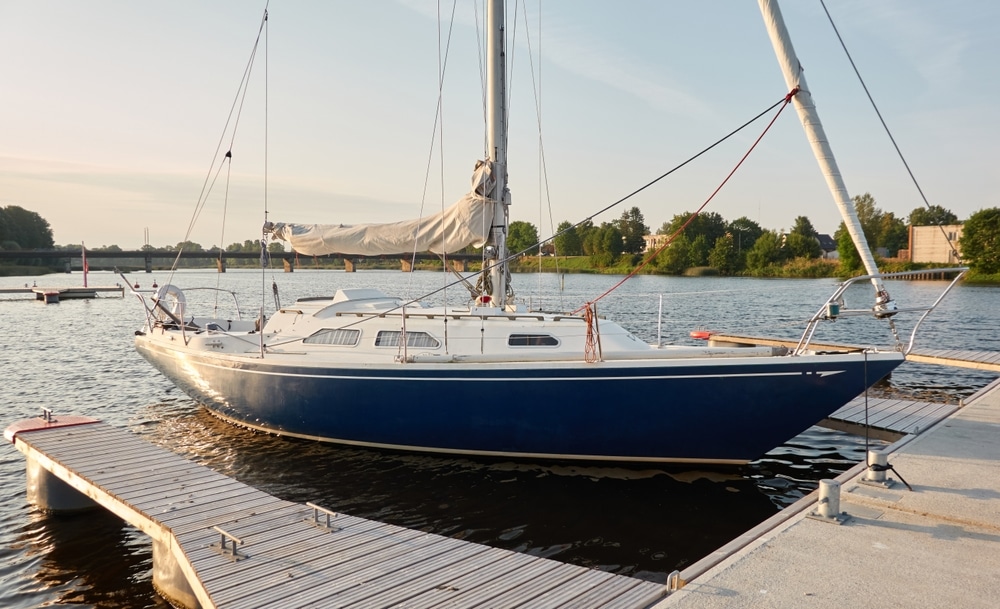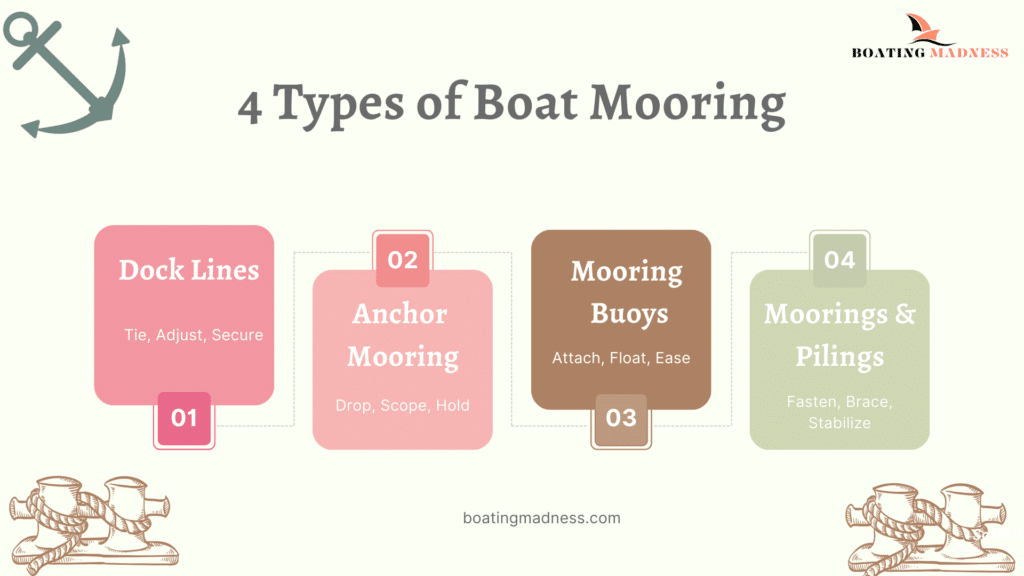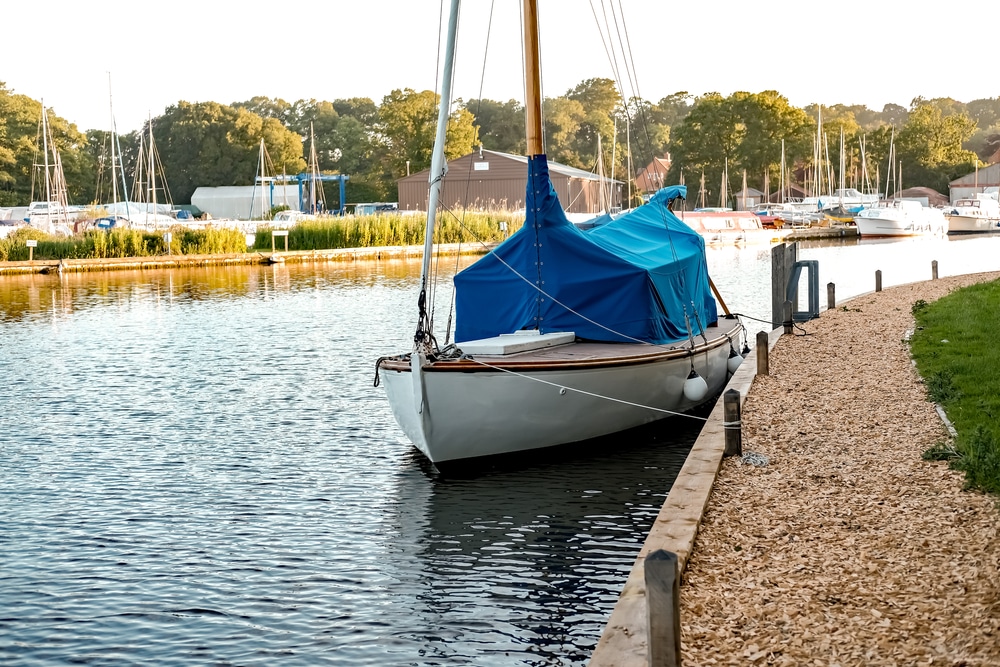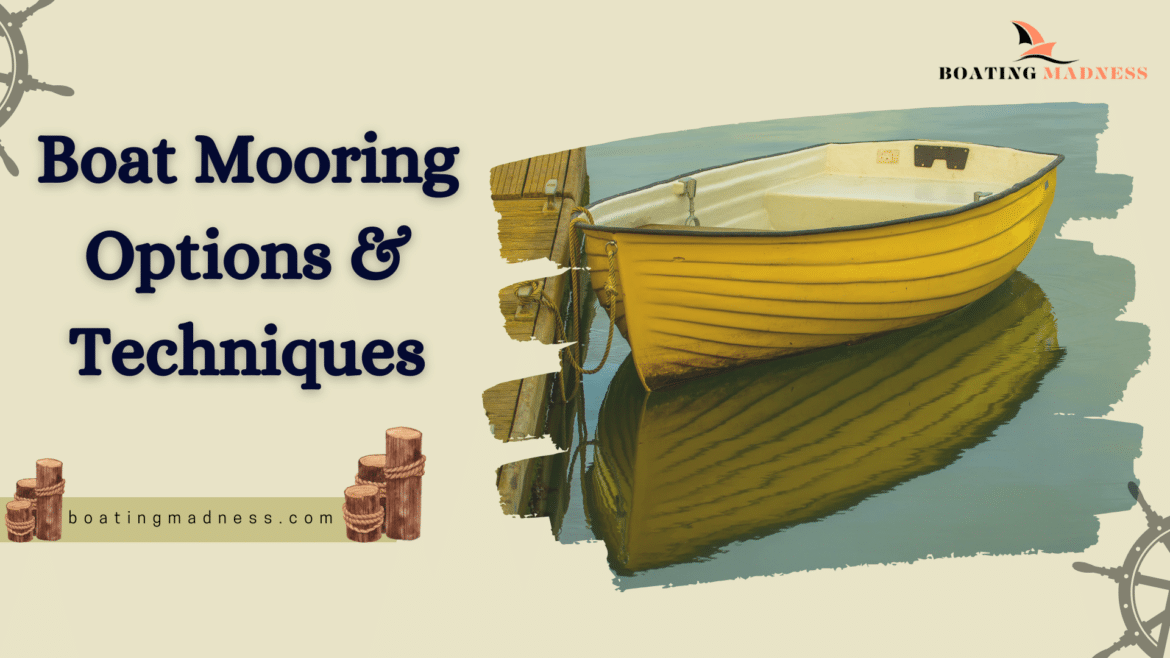Table of Contents
Are you a boating enthusiast who likes boating as a hobby? Then you will probably be worried about where to moor the boat perfectly. If you are fond of boating sometimes, then you can easily park or store it in the yard, garage, or any such place. However, if you are someone who boats more frequently, then parking it near the water or over the floating waters is an ideal choice. Now, the question might pop up in your mind: why is it preferable to store it near the water? This is because boat mooring facilitates easy launch. So, in this guide, I am going to help you with boat mooring options. Get ready!
Concept of Boat Mooring

Let’s talk about boat mooring; it’s just a fancy way of saying you’re tying your boat to keep it safe and steady in one spot. Whether you’re using a buoy, an anchor, or dock lines, the goal is simple: no drifting, no damage.
Mooring makes docking and loading easier, protects your boat, and even helps the environment if you use eco-friendly systems.
Quick Mooring Tips
- Safety First: Secure your boat to avoid drifting or collisions.
- Anchor Types: Choose buoys, helical anchors, or dock lines.
- Eco-Mooring: Protect marine life with environmentally friendly options.
- Stay Ready: Inspect your gear regularly to avoid surprises.
- Easy Docking: Good mooring makes loading and unloading a breeze.
Types of Boat Mooring

Securing your boat safely requires choosing the right method based on location and conditions. Here are the main types of boat mooring:
Dock Lines
Simple and effective, dock lines secure your boat directly to a dock or wharf using durable ropes. They provide stability against tides and winds.
Usage
-
- Attach one end to your boat’s cleats and the other to dock hooks or bollards.
- Adjust the tension to keep the boat stable and aligned.
Advantages
- Easy for boarding and unloading.
- Quick adjustments for changing conditions.
Anchor Mooring
This versatile method uses an anchor dropped to the seabed, holding your boat steady in open waters. Ideal for locations without docks.
Usage
-
- Deploy the anchor from the bow with enough scope for secure holding.
- Suitable for remote anchorages or deep water.
Advantages
- Reliable for temporary stops in diverse conditions.
- Works where mooring buoys aren’t available.
Mooring Buoys
Fixed to the seabed, mooring buoys offer an easy attachment point for boats in busy waterways. Quick and environmentally friendly.
Usage
- Approach the buoy and secure lines from it to your boat’s cleats.
- Ideal in locations with strong currents or limited anchoring space.
Advantages
- Fast and simple mooring solution.
- Protects the seabed from anchor damage.
Moorings and Pilings
These permanent structures provide reliable mooring points in harbors and marinas. Perfect for crowded or high-traffic areas.
Usage
-
- Secure your boat to the piling or mooring using strong lines.
- Use cleats to keep the boat stable in tidal zones.
Advantages
- Reduces collision risks in busy spots.
- Offers long-term stability.
Techniques for Secure Boat Mooring

There are various techniques to safely and effectively store the boat over the waters. Let’s delve into the techniques in detail.
Proper Line Handling
Think of dock lines as your boat’s shoelaces; tie them snug, or the boat might wander off.
Tips
- Secure lines to cleats or bollards tightly.
- Coil lines neatly to avoid knots and tripping hazards.
- Check for fraying before it turns into snapping.
Correct Anchor Placement
Dropping the anchor randomly is like throwing spaghetti at the wall and hoping it sticks. Be strategic.
Tips
- Choose a spot with the right water depth and seabed.
- Pay out enough anchor rode (scope) for a solid hold.
- Avoid deploying near rocks or coral to prevent dragging.
Regular Equipment Checks
A broken line or rusted anchor is a recipe for a drifting disaster. Maintenance is your best friend.
Tips
- Inspect lines for wear, especially at contact points.
- Check anchors for corrosion or bending.
- Examine hardware like shackles and swivels regularly.
Weather Monitoring
Ignoring the weather is like leaving your umbrella at home on a rainy day, expect trouble.
Tips
- Check forecasts for wind and storms before mooring.
- Adjust lines or reposition anchors as conditions change.
- Head to a sheltered spot if a storm is brewing.
Backup Systems
Always have a Plan B because Plan A sometimes floats away.
Tips
- Carry spare dock lines and an extra anchor.
- Use different anchors for varying seabed conditions.
- Know local mooring regulations to stay compliant.
Now, if you have a panga boat or a hydrofoil boat, just shake off your worries as you are about to moor your boat perfectly with our guide.
Conclusion
Wrapping it up, this article covered the phenomenon of boat mooring to secure your vessel in the waters. It is an ideal option for those who are fond of boating more frequently. Moreover, different types of mooring have also been discussed to give a variety of options to choose from.
Secure Your Sail, Anchor with Style!


2 comments
[…] enjoying the water waves. Cleaning and maintaining a boat are as important as boat docking and boat mooring. You are enjoying boating every other day; you should know that debris and dust accumulate in every […]
[…] You can tie the boat and relax with your family and friends in an ideal yacht. However, just like boat mooring, it is worth mentioning that the docking process also entails some essential steps to make the […]